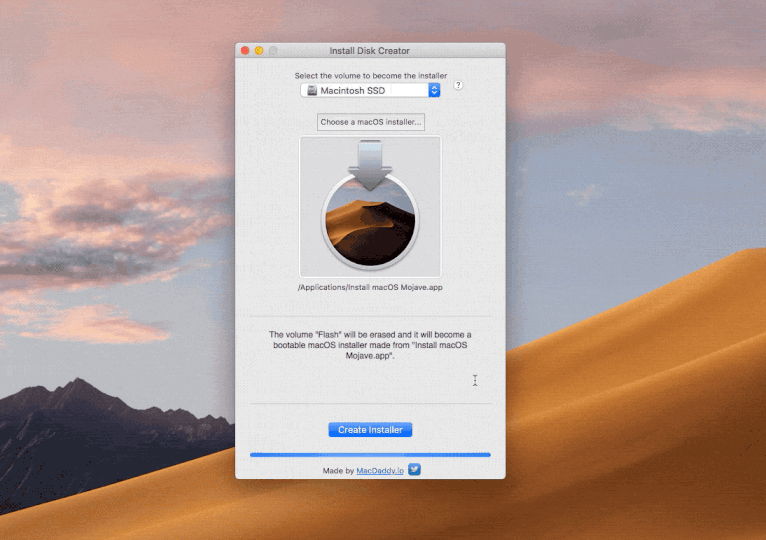

- #MAC BOOTABLE USB CREATOR TOOL FOR WINDOWS 7 HOW TO#
- #MAC BOOTABLE USB CREATOR TOOL FOR WINDOWS 7 MAC OS#
- #MAC BOOTABLE USB CREATOR TOOL FOR WINDOWS 7 INSTALL#
- #MAC BOOTABLE USB CREATOR TOOL FOR WINDOWS 7 UPDATE#
- #MAC BOOTABLE USB CREATOR TOOL FOR WINDOWS 7 UPGRADE#
Apple hardware supports these operating systems natively, making Macs a versatile choice for production equipment. Macs, on the other hand, have the ability to run Windows and countless Linux distributions alongside OS X or in place of it. The answer to that is quite simply "because you can." Apple hardware is similar to its PC counterparts in many ways except one: PCs can't natively run OS X without any software hacks involved.
#MAC BOOTABLE USB CREATOR TOOL FOR WINDOWS 7 INSTALL#
Why would you install any OS-besides OS X-on an Apple computer? But before diving into that, I have a question of my own.
#MAC BOOTABLE USB CREATOR TOOL FOR WINDOWS 7 HOW TO#
You can also use Safari, Disk Utility, or Time Machine from the recovery partition to restore backups or troubleshoot.After last week's article, " Pro tip: How to create a bootable USB drive to install Windows on OS X," I received feedback asking why anyone would install Windows on a Mac? This week's entry deals with creating UFDs that allow you to install many other operating systems with the help of a utility called Rufus.
#MAC BOOTABLE USB CREATOR TOOL FOR WINDOWS 7 UPGRADE#
Once booted, you'll be able to install or upgrade Catalina as you normally would. Whichever method you use, you should be able to boot from your new USB drive either by changing the default Startup Disk in System Preferences or by holding down the Option key at boot and selecting the drive. If you would like to create an install drive for a macOS version other than Catalina, just tweak the paths above to refer to Mojave or High Sierra instead. Give it some time, and your volume will soon be loaded up with not just the macOS installer but also an external recovery partition that may come in handy if your hard drive dies and you're away from an Internet connection. It will then boot a pre-packaged version of macOS from where you can run the checkra1n tool and proceed to jailbreak your iPhone. The command will erase the disk and copy the install files over. Sudo /Applications/Install\ macOS\ Catalina.app/Contents/Resources/createinstallmedia -volume /Volumes/Untitled
#MAC BOOTABLE USB CREATOR TOOL FOR WINDOWS 7 MAC OS#
Assuming that you have the macOS Catalina installer in your Applications folder and you have a Mac OS Extended (Journaled)-formatted USB drive (which is to say, HFS+ and notAPFS) named "Untitled" mounted on the system, you can create a Catalina install drive using the following command. The Install Disk Creator is just a wrapper for the terminal command to create macOS install disks, so if you’re comfortable formatting your USB drive yourself and opening a Terminal window, it’s almost as easy to do it this way. This should only take a few minutes on a USB 3.0 flash drive in a modern Mac, though using USB 2.0 will slow things down. A progress bar across the bottom of the app will tell you how far you have to go, and a pop-up notification will let you know when the process is done.


Once you're ready to go, click "Create Installer" and wait. You can navigate to a different installer if you want, and you can also pick from all the storage devices and volumes currently connected to your Mac through the drop-down menu at the top of the window. Install Disk Creator will automatically detect macOS installers on your drive and suggest one for you, displaying its icon along with its path. Apple rolls support for newer hardware into new macOS point releases as they come out, so this will help keep your install drive as universal and versatile as possible. If you want to use this USB installer with newer Macs as they are released, you'll want to periodically re-download new Catalina installers and make new install drives. There are other apps out there that do this, but this one is quick and simple. If you want a GUI, take a look at Ben Slaney's Install Disk Creator from MacDaddy.The installer will delete itself when you install the operating system, but it can be re-downloaded if necessary.
#MAC BOOTABLE USB CREATOR TOOL FOR WINDOWS 7 UPDATE#


 0 kommentar(er)
0 kommentar(er)
